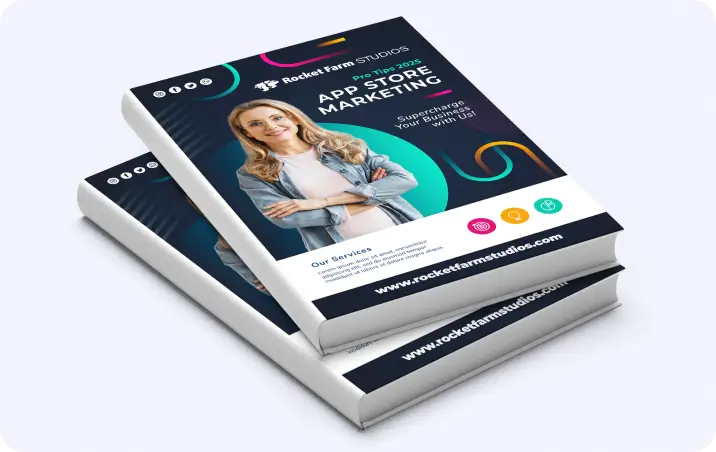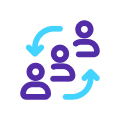Download our E-BOOK
The Role of Mental Models in UX Design
June 17, 2025
by Hassam
When someone uses your app for the first time, they do not start from zero. They come in with expectations shaped by other products, daily routines, and real-world experience.
In UX, these expectations are called mental models.
A mental model is a user’s internal understanding of how something should work. The closer your interface matches that model, the easier it is for someone to navigate, explore, and feel confident using what you have built.
When it does not match, users get confused, make mistakes, or stop using the product altogether.
This post explains what mental models are, why they matter in UX design, and how aligning with them leads to better digital experiences.
Designing with mental models in mind is not about copying what others do. It is about understanding how people think,
What Are Mental Models?
A mental model is a person’s idea of how something works, based on past experience. It is not always accurate, but it shapes how someone approaches a task or tool.
In UX, mental models guide how users expect an interface to behave before they even interact with it.
These expectations come from both digital and real-world interactions. For example, people understand that folders contain files because they have seen that structure on their desktops, in physical filing systems, and in other apps.
So when an app uses a folder icon, users usually know what it means without needing instructions.
The key is this: users bring their own logic. If your interface matches that logic, it feels natural. If it does not, even a simple task can feel frustrating.
Why Mental Models Matter in UX
When your design lines up with what users already expect, the experience feels easy. People know what to do without needing extra instructions. They complete tasks faster because the interface behaves in a familiar way.
When the design breaks those expectations, users get stuck. They might press the wrong button, look in the wrong place, or give up altogether. Even small moments of confusion can create frustration and slow them down.
Good alignment builds confidence. When users feel like the product works the way they expect it to, they trust it more and move through it with less effort.
Types of Mental Models in UX
Not all mental models are the same. Users form different types of expectations depending on the task, context, or past experience. Here are a few common types that affect UX design:
- Device-Based Models
These are shaped by how users interact with their devices. For example, tapping and swiping on phones versus clicking and hovering on desktops. Mobile-first designs often succeed because they match how users expect to interact on smaller screens. - Real-World Analogies
Many interfaces use physical objects as metaphors—folders, buttons, trash cans, or sliders. These visual and functional cues help users relate digital actions to real-world behavior. - App-to-App Transfer Models
Users bring patterns from other apps into your product. For example, they may expect a social feed to scroll vertically, or assume that clicking a profile picture leads to account settings. - Task-Oriented Models
These models are shaped by goals. If a user wants to book a flight or reset a password, they already have a general idea of what steps should be involved. The UI should match that flow to avoid confusion. - System-Based Models
These are deeper expectations about how systems behave. For example, users assume that autosave is enabled, that back buttons return to the previous screen, or that errors will be explained clearly.
When Mental Models Work
Google Drive uses a folder and file system that mirrors how people organize documents on a computer. Users understand how to create folders, move files, and search through them because the structure feels familiar. There is no need to learn a new system. It builds on what users already know.
Mobile banking apps often use a card-style layout for each account or transaction. This design reflects the idea of physical cards in a wallet or stacks of receipts. It makes it easier for users to scan, swipe, and sort information in a way that feels natural.
When Mental Models Break
Windows 8 removed the Start menu and replaced it with a tile-based interface. For many users, this broke a familiar pattern they had relied on for years. The system still worked, but it didn’t match their expectations. The change caused confusion and resistance.
Gesture-heavy apps that rely on swipes or taps without clear visual cues often create problems. If users cannot see what to do or guess it based on past experience, they either miss key actions or trigger the wrong ones.
Designing with Mental Models in Mind
Designing with mental models means aligning your interface with how users already think systems should work. Here are practical ways to do that:
- Start with user research
Look at tools your users already use. Identify common patterns and expectations through interviews, usability tests, or competitor analysis. - Use familiar patterns
Stick to icons, layouts, and flows that people already understand. A gear icon for settings or a trash can for delete are small choices that reduce friction. - Guide users when patterns change
If you introduce a new interaction, help users adjust. Tooltips, short onboarding steps, or subtle labels can ease the transition. - Give clear feedback
Use visual cues like loading spinners, checkmarks, or error messages to show what is happening. Feedback keeps users oriented and builds trust. - Test for alignment
Watch how users interact without instructions. If they hesitate or guess wrong, their mental model may not match your design.
Let’s Review
Mental models are the assumptions users bring with them when they interact with a product. These expectations come from daily experience, familiar apps, and learned behavior. When your design matches those expectations, users feel at ease. When it does not, even simple actions can become confusing.
There are several types of mental models. Some are based on devices, like tapping versus clicking. Others come from real-world analogies, task flows, or systems users have seen before. Recognizing these patterns helps you design products that feel more intuitive.
Designing with mental models in mind is not about copying what others do. It is about understanding how people think, then building interfaces that meet them where they already are.
Related Blog & Posts

How to Increase conversion in 2025
With over 25 years in technology and product development, Dan leads Rocket Farm Studios with a commitment to innovation and growth.
Ready to turn your app idea into a market leader? Partner with Rocket Farm Studios and start your journey from MVP to lasting impact.”
Teams for App Development
We help companies build their
mobile app faster with go to market strategy

Technology and UX Audits

Early Design Sprints

MVP Creation

App Store

Growth Teams
Download Our Free E-Book
Whether you’re launching a new venture or scaling an established product, Rocket Farm Studios is here to turn your vision into reality. Let’s create something extraordinary together. Contact us to learn how we can help you achieve your goals.






